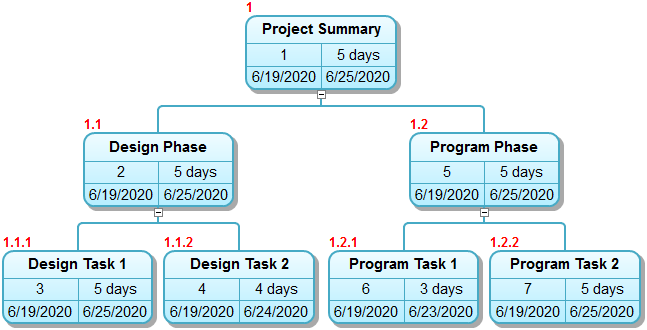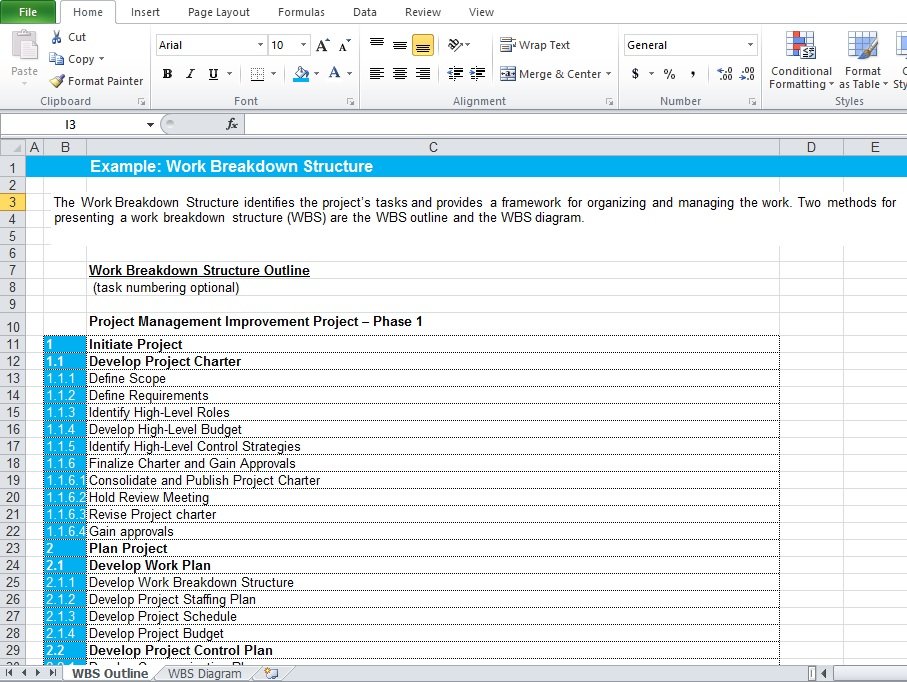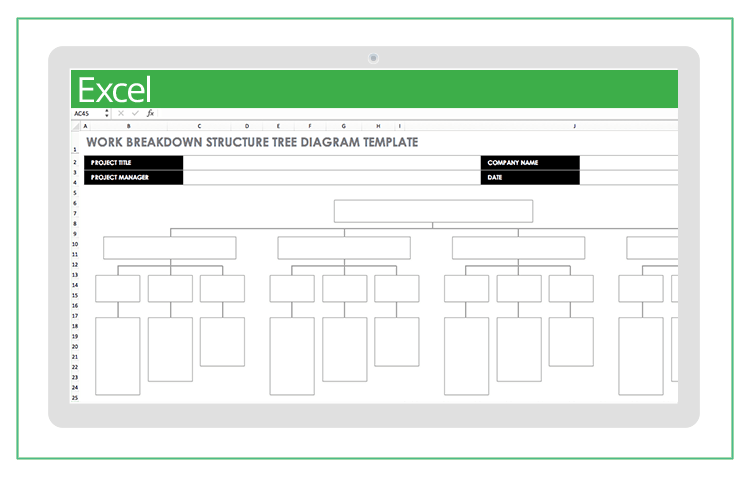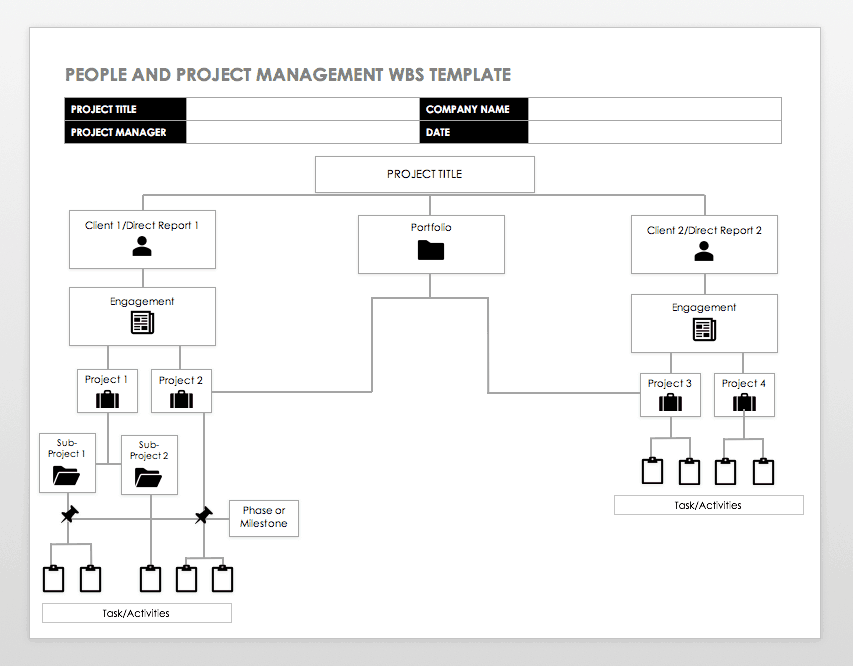

Step 4: With the help of the subject matter experts, break the key deliverables into smaller parts of work (work packages) or in other words identify the work that is necessary to complete each deliverable. Key deliverables will be essential to the completion of the project and they will be carried out by independent teams – meaning the same team won’t be working on completing another deliverable. These should come at the second level of your WBS. Step 3: Identify the key deliverables of the project. Step 2: Gather the necessary documents such as the project charter, project scope statement, and project scope management plan.

This would include the project managers and the subject matter experts. Step 1: Get your team together to identify the deliverables and sub-deliverables of the project.

Focus on the what and not the how.įollowing we have listed the steps you need to take to create a work breakdown structure from scratch. The work breakdown structure must be focused on outcomes or deliverables and not the activities you need to complete to get there. The 8/80 rule: According to this rule, the work packages or the work required to create the deliverables should not take less than eight hours and more than eighty hours. This helps avoid miscommunication and duplication of tasks. According to it the sum of the “child” tasks (on any level) must equal to 100% of the parent tasks.Īll deliverables and sub-deliverables must be mutually exclusive, which means they shouldn’t appear twice within the work breakdown structure. The 100% rule: This rule helps the manager to ensure that all project efforts are captured and nothing unrelated is included in the structure. Rules You Need to Stick by When Designing a WBSįollowing are the principles you need to adhere to when designing a work breakdown structure. They shouldn’t be dependent on other work packages and should not exceed more than 10 days to complete.ĭeliverables: Outcomes of the activities or the products or measurable outcomes you’ll have created at the end of each milestone. They define the work, duration, and costs for the tasks that need to be carried out to complete the deliverables. Work packages: These are the lowest parts in a work breakdown structure. Helps set clear timelines for the project and ensure that no work is duplicated or overlookedįollowing are the elements of a work breakdown structure and the common terms that you may come across when creating one.Visualizes important parts of a project and helps identify areas of risk.Helps with estimating the time and cost for the project and allocate resources.Helps with identifying the project milestones and control points.Makes it easier to assign responsibilities accurately to the project team.Visualizes the scope of the project, making it easier to do the planning.Work Breakdown Structure Example (Click on the template to edit it online) Benefits of Work Breakdown Structures In the case of a more complex project, you may add a fourth and a fifth level. Usually, it’s better to have three levels of decomposition in a WBS. It’s a deliverables-oriented breaking down of a project that divides project deliverables into sub-deliverables and work packages which define the work, duration and costs for the tasks that need to be carried out. It’s a diagram that helps break down large projects into smaller and more manageable parts which contain the project deliverables or outcomes that it will complete. What is a Work Breakdown Structure?Ī work breakdown structure is a popular project management tool. You can edit and export them as SVGs and images or share them with colleagues for collaboration.
#Wbs project management template how to
In this guide, we will explain what is a work breakdown structure (WBS), how to create one and give you access to WBS templates for several scenarios.

When it comes to planning a project, the work breakdown structure is one of the first things a project manager has to work on.


 0 kommentar(er)
0 kommentar(er)
